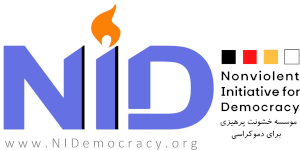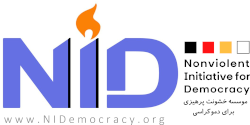Stephanie Van Hook
Anger, rage and a desire for revenge are all reasonable and justified in the face of armed attacks, abuse and exploitation. What matters is what we do with these things.
As Leymah Gbowee stood in front of a crowd of women at her church in Monrovia, praying for an end to the civil war that was raging in Liberia, she had no idea of the consequences that were about to unfold.
A specialist in healing from trauma, Gbowee and her allies had spent months visiting mosques, markets and churches in order to mobilize a nascent peace movement. By the late summer of 2002, she had become recognized as the leader of Women of Liberia Mass Action for Peace, which held daily non-violent demonstrations and sit-ins in defiance of orders from Charles Taylor, the Liberian President at the time.
Eighteen months later, in August 2003, the war was brought to an end. Gbowee’s efforts, along with those of newly-elected President Ellen Johnson Sirleaf, were recognized by the award of the 2011 Nobel Peace Prize. I heard Gbowee speak at an interfaith conference in North Carolina in 2012, where she emphasized that the main challenge she had faced was not apathy. Liberians were already angry.
The real issue was how to keep well-intentioned people from exacerbating an already-cruel situation with more violence. Why? Because the more violence there is, the more abuses there will be against women and other people. Anger is reasonable and justified in the face of abuse and exploitation, but what really matters is what we do with it. According to Gbowee, anger is neutral. We can choose to use it as a fuel for violence or nonviolence. Liberian women chose the latter, and transformed a civil war into a lasting peace.
Gbowee’s insights are rooted in a long tradition of successful nonviolent resistance that runs through the course of history, but whose teachings are often ignored. At a special session of the Indian National Congress in Calcutta in September 1920, Mohandas “Mahatma” Gandhi maintained that even non-cooperation with the established order requires nonviolent discipline:
“I have learnt through bitter experience,” he said, that “the one supreme lesson is to conserve my anger, and as heat conserved is transmuted into energy, so our anger controlled can be transmuted into a power that can move the world.”
The women of the Liberian peace movement transformed their anger into nonviolent power in situations of brutality that I pray I will never experience: mutilations, murder and rapes of children and other family members in front of their eyes. These women had more reason than most other people to turn to violence, but they did not, giving the lie to those who say that violence is necessary under such circumstances. This lesson is confirmed by the experiences of many other activists who have refused to react violently even under extreme pressure, but it is often forgotten or dismissed.
“Non-violence, being natural, is not noted in history” wrote Gandhi in his classic text Hind Swaraj. Modern civilization does not give us the tools to see the subtler effects of violence and nonviolence. This problem is compounded by the fact that many of those who use nonviolence to good effect live under the radar screen of history because they are marginalized. Many systems of privilege condition us to write off the experiences of those who are not considered to be experts, like women who are working at the grassroots level or success stories from the global South. And even when such stories are recognized, they are often interpreted as arguments for the necessity of violence. The end of Apartheid in South Africa is an oft-quoted example.
The victory of the African National Congress is rightly celebrated, but it succeeded in dislodging one system of violence in South Africa and not violence itself. Structural violence that feeds through into direct violence – like poverty, inequality and exploitation – remains largely unaffected. Apartheid means “apartness,” and that’s what all forms of violence do, by pulling people apart. The balance between armed struggle and nonviolence as forces that led to the overthrow of Apartheid has been debated for more than twenty years. Nelson Mandela, who died on December 5th, internalized this debate in his embrace of both strategies simultaneously.
For every celebration of armed confrontation there are many more nonviolent victories in the “anti-apartheid” struggles of today. The story of Budrus, in the West Bank, is one. By remaining committed to nonviolence and launching a “women’s contingent” to join the struggle, Palestinian activist Ayed Morrar and his fifteen-year old daughter Iltezam were able to unite members of both Fatah and Hamas in a successful attempt to protect their village from destruction by Israel’s “Separation Barrier.”
To those who say that nonviolence is admirable but ineffective, Erica Chenoweth, the author of the ground-breaking book Why Civil Resistance Works, says “think again.” The growing research base on nonviolent resistance and a burgeoning literature on the effects of violence provide a platform for making more informed judgments about these strategies. When nonviolence is taken seriously, its successes can be systematized and strengthened.
In South Sudan, for example, the world’s newest country, people are not only learning from the experience of the Liberian women’s movement, but taking it one step further by institutionalizing nonviolent ways of dealing with the country’s conflict-ridden transition to independence. A variety of local and international groups are collaborating to reduce the potential for violent conflict by training unarmed civilian peacekeepers to create local peace teams.
One of the key actors in these endeavors is the Nonviolent Peaceforce, which through its civilian protection monitoring role is helping different parties to achieve sustainable peace agreements between, for example, the Moro Islamic Liberation Front and the Philippine Government in the Philippines. They have also supported mothers in demanding the safe return of their abducted children in Sri Lanka; accompanied and protected human rights defenders Guatemala; and are currently beginning a new project in Myanmar.
Unarmed peacekeeping is a good fit for the world’s newest country because it is one of the latest innovations in conflict transformation. It uses state-of-the-art knowledge about resolving conflict without the threat or use of weapons, and trains people in a variety of skills and tactics. They include “nonviolent accompaniment” and “protective presence,” in which peacekeepers live and work alongside people who are threatened; “conflict mapping”, mediation, and direct “interposing” – the act of literally getting in between conflicting parties to deter them from using violence against each other.
The experience of those who use these techniques suggests that courage is not the willingness to kill; it’s the willingness to risk ourselves for the greater good, and that is arguably something that everyone can do when we convert our anger into fuel for nonviolent struggle. We have been conditioned to think that such attitudes are naïve by the continuous hum of violence that surrounds us – its proximity and acceptability in daily life. But maybe that noise is also drowning out the voices of those who could show us that nonviolence really works?
Nonviolence is not passivity – it is immensely active and challenging. But practicing nonviolence enables us to see more deeply into the heart of the problems that face us all, and it helps us to escalate our nonviolent efforts in ways that are more informed, sophisticated and courageous. To echo Buckminster Fuller, “You never change things by fighting the existing reality. To change something, build a new model that makes the existing model obsolete.”



